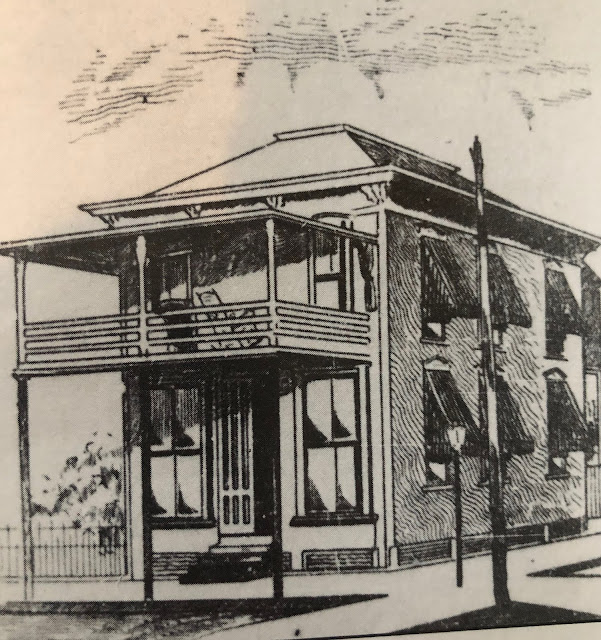 |
| Consolidated Ice and Fertilizer Plant on Berry and Olympia |
In the early 18th century, Spanish-Cuban
fishermen discovered Charlotte Harbor to be a rich source of a variety of
fish. But the distance from the Harbor
to Cuba presented a problem.
Spoilage. The original solution
was to soak the fish in saltwater, then dry and press it. The Cuban fisherman continued to fish the
waters of Charlotte Harbor off and on (somewhat disrupted by wars, the British
takeover of Florida in the latter part of the 1700s, and then by the United
States acquisition of Florida in 1821).
By the later part of the 1700s they were
packing their catch in salt for transport back to Havana. By
this time, they had established permanent or semi-permanent camps or “ranchos”
in the Harbor. But the nascent fishing
industry was disrupted again when tensions between the U.S. and the Cubans over
control of the fisheries in Charlotte Harbor led to the murder of a customs
official at Useppa Island in the 1830s and ultimately to the abandonment of the
fish camps. While according to a survey
by Goode after the Civil War, some camps had been re-established, it wasn’t
until Isaac Trabue founded his town that fishing reemerged as a major
industry -- and the difference this time
was ice.
Trabue opened his first ice factory in 1891, the only
product was ice for the mullet season.
The factory located near Berry and Olympia turned out over 15 tons a day
to support the early industry and was powered by steam. But by 1895 a competitor emerged, a group of Punta
Gorda business men including L.T. Blockson, James Sandlin, Charles Davis, John
Farrington and Albert Dewey established the Punta Gorda Ice and Power Company. The plant located at the corner of Tamiami
Trail and Virginia turned out 25 tons daily. A sideline was the sale of
electricity for homes and businesses near the factory. It was able to produce ice cheaper than
Trabue’s factory which was forced to close in 1897 once Plant removed railroad
tracks west of King Street (Tamiami Trail). Undeterred, Trabue connected with a consortium
of Philadelphia investors to establish the Consolidated Manufacturing
Refrigerating and Fish Company and erected in 1903 what was touted as the largest
ice and freezing plant in the world.
This plant which turned out ice cubes weighing 6,000 pounds only operated
for only a short while.
 |
| Punta Gorda Ice and Power Company |
The Punta Gorda Ice and Power Company used ammonia as the
refrigerant. After first being compressed in a large cylinder, the expanding
ammonia gas supercooled in an adjacent tank of brine. Then, when a series of
steel buckets, suspended from the ceiling, each containing about 30 gallons of
water were immersed in the supercooled brine, the freshwater inside the
buckets would freeze into blocks of ice.
A system of ice stations was developed for collecting iced
fish from the ice stations, scattered throughout Charlotte Harbor. Then the traditional salt fisheries were
abandoned. Instead, run boats would carry ice to the stations and deliver fish back
to the fish houses in Punta Gorda. Fish
would be packed in bins on boxcars with alternating layers of ice for train
shipment north. (In one month during
World War II when meat was rationed, the Punta Gorda Fish Company shipped almost
2 million pounds of fish north.)
In 1913 the Ice and Power Company structure was expanded. Perry McAdow who owned the controlling
interest at the time sold the company to Southern Utilities. Ultimately it was purchased by Florida Power
and Light.
By Theresa Murtha
By Theresa Murtha
Sources:
Van Itallie, Theodoric B. Triumph of Ice over Salt - the Changing Face of Commercial Fishing in Charlotte Harbor
Punta Gorda Herald, 1895, 1913 various articles
Williams, Lindsey, Our Fascinating Past, the Early Years
Peeples, Vernon, Punta Gorda and the Charlotte Harbor Area.. A Pictorial History



